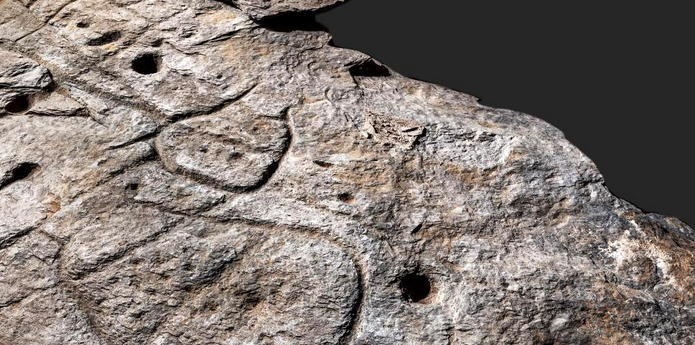Saint-Belec Slab
A piece of rock bearing mysterious markings, known as the Saint-Belec slab, which lay largely unstudied for 4,000 years, has become a vital tool for archaeologists in north-western France. Researchers declared it Europe’s oldest map in 2021 and are now using it to rediscover lost ancient sites, a novel approach in archaeological research. The slab’s etchings offer clues to dating the artifact and locating long-forgotten monuments.
A Unique Approach to Archaeology
- Unconventional Method: Archaeologists are utilizing the Saint-Belec slab as a “treasure map” to identify ancient sites, departing from traditional methods involving radar equipment, aerial photography, or accidental discoveries during construction projects.
- A Significant Endeavor: The map encompasses an area of approximately 30 by 21 kilometers, and researchers plan to conduct a comprehensive survey of the entire territory, cross-referencing the slab’s markings with potential archaeological sites.
- Long-Term Project: The process of surveying and analyzing the slab’s markings could span 15 years, given the extensive area to cover and the complexity of deciphering the etchings.
Decoding the Slab’s Secrets
- Rediscovery: The Saint-Belec slab was rediscovered in 2014, initially uncovered in 1900 by a local historian who did not recognize its significance.
- Geographical Clues: Researchers identified familiar geographical features, such as rivers and mountains in the slab’s etchings, specifically in the Roudouallec region of Brittany, located about 500 kilometers west of Paris.
- Mapping Progress: A comparison with contemporary maps revealed an approximate 80 percent match with the slab’s markings. However, the team is still working on identifying all the geometric symbols and accompanying legends.
- Hollows and Significance: The slab exhibits tiny hollows that researchers believe may point to burial mounds, dwellings, or geological deposits. Deciphering their meaning could lead to the discovery of more archaeological sites.
Recent Archaeological Insights
- Ongoing Excavations: Archaeologists have conducted recent excavations at the original site where the slab was found. This site is considered one of the largest Bronze Age burial grounds in Brittany.
- Clues from Fragments: The excavations have already yielded fragments of the slab that had been broken off and used as tomb wall material. This finding suggests shifts in power dynamics within Bronze Age settlements.
- Kingdom’s Collapse: The mapped area on the slab likely corresponds to an ancient kingdom, possibly one that experienced turmoil, revolts, and rebellions leading to its collapse. The slab’s significance may have been diminished, and it was repurposed as building material.
Month: Current Affairs - October, 2023
Category: Science & Technology Current Affairs








